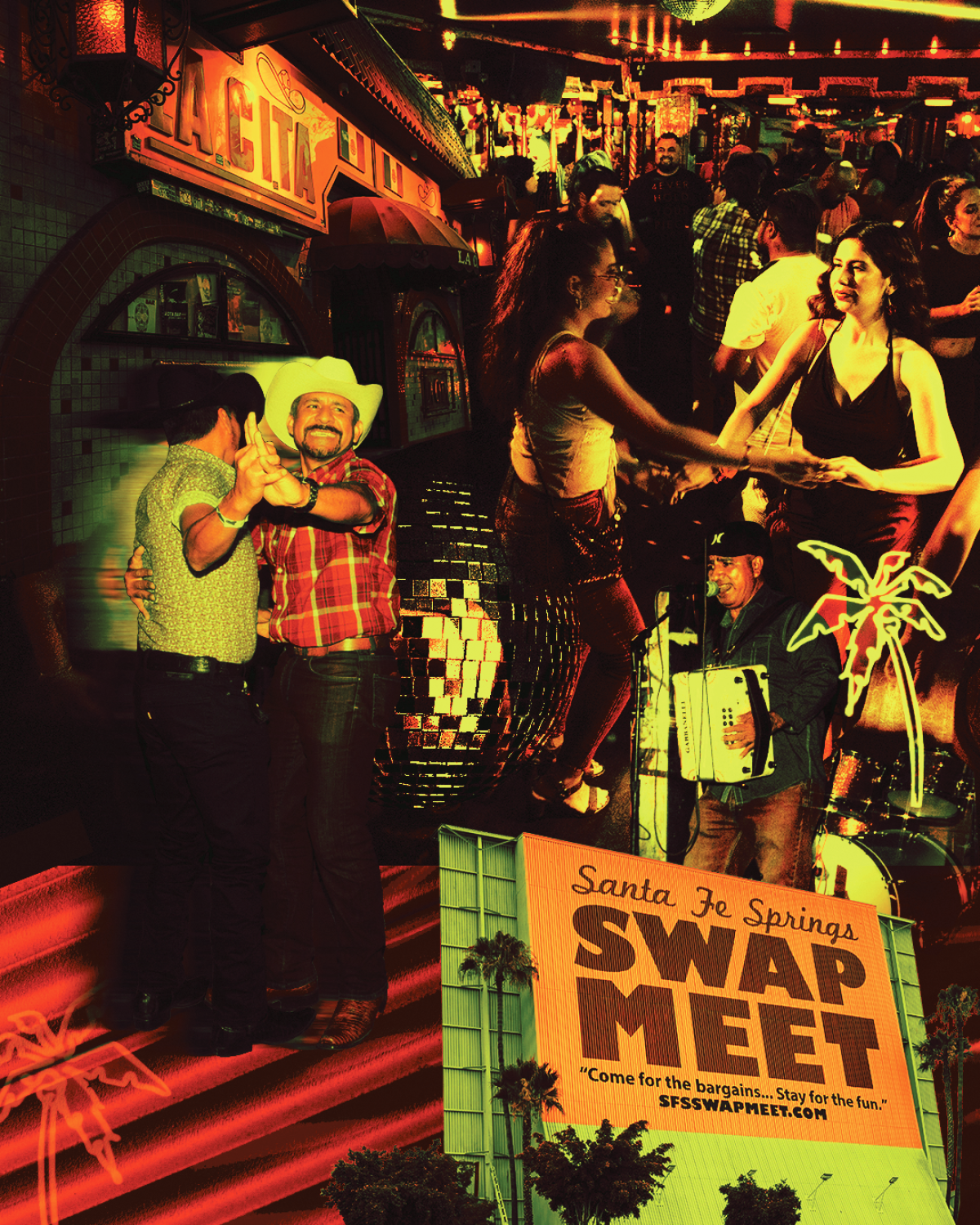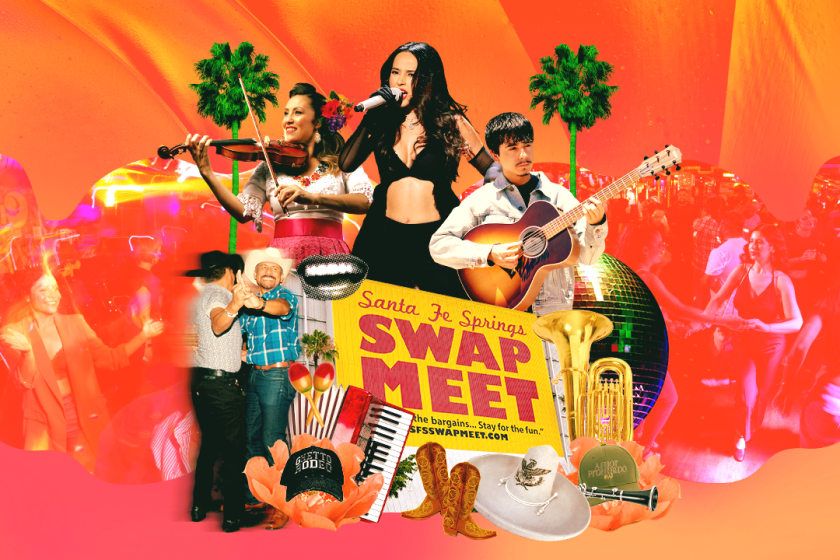
The 7 best spots in L.A. to get your música Mexicana fix
- Share via
To many, the upbeat sounds of música Mexicana are synonymous with a night of partying in L.A.
Between the genre’s roaring trumpets, high-pitched guitars and resounding bass lines, its distinct sounds almost demand dancing. Catering to the evolving and now mainstream soundscape, Los Angeles nightlife offers a mix of pop-up dance parties, iconic concert venues and nightclubs where everyone — including its nearly 5 million Latino residents — can indulge in the regional Mexican sound.
Música Mexicana has been pushed into the mainstream over the last five years by Gen Z and millennial Latino audiences. Here’s a guide on the genre’s essential instruments, where to find the best música Mexicana-themed parties, where to shop for the perfect vaquero outfit and more.
Hot spots throughout the city like the Pico Rivera Sports Arena and the Santa Fe Springs Swap Meet offer bigger spaces that create more of a music festival feel. In addition to charrerías, the Sports Arena is notorious for its Picolandia nights where bandas, norteños and tamborazos come together to create one of L.A.’s biggest regional Mexican music dance parties.
Whether you’re looking to sip on a michelada, find the perfect banda dancing partner or even ride a mechanical bull, these themed outings are more extensive than one might think. Here’s our list of seven venues and parties that offer the best música Mexicana nightlife.

Santa Fe Springs Swap Meet

La Zona Rosa

First Fridays with I Love Micheladas
Across several stages, DJs and live bandas play a lively mix of classic artists like Los Tucanas de Tijuana and newer groups like Fuerza Regida to a vast crowd. Over the years, First Fridays has become more than a vibrant dance floor, offering flash tattoo artists, hat vendors, a mechanical bull and a selection of local Mexican food. When exploring the open-air venue, odds are high you might run into their mascot, “the Miche Man,” someone dressed in a michelada piñata, responsible for keeping the vibrations high.

Cumbiatón

Pico Rivera Sports Arena

La Cita

Club Tempo
The Latinx experience chronicled
Get the Latinx Files newsletter for stories that capture the multitudes within our communities.
You may occasionally receive promotional content from the Los Angeles Times.




